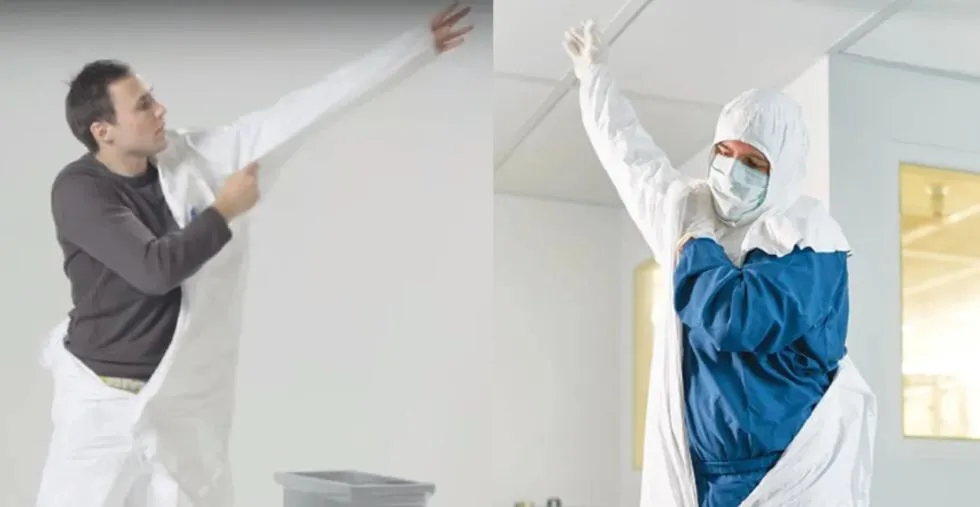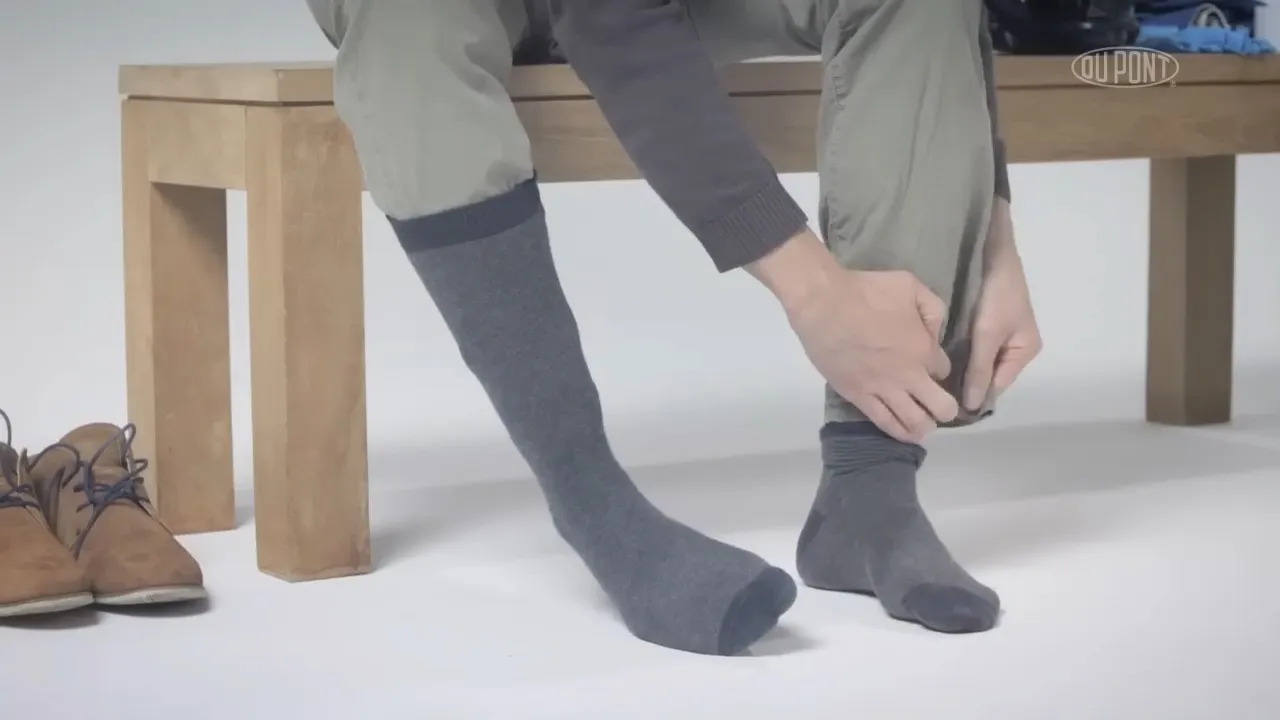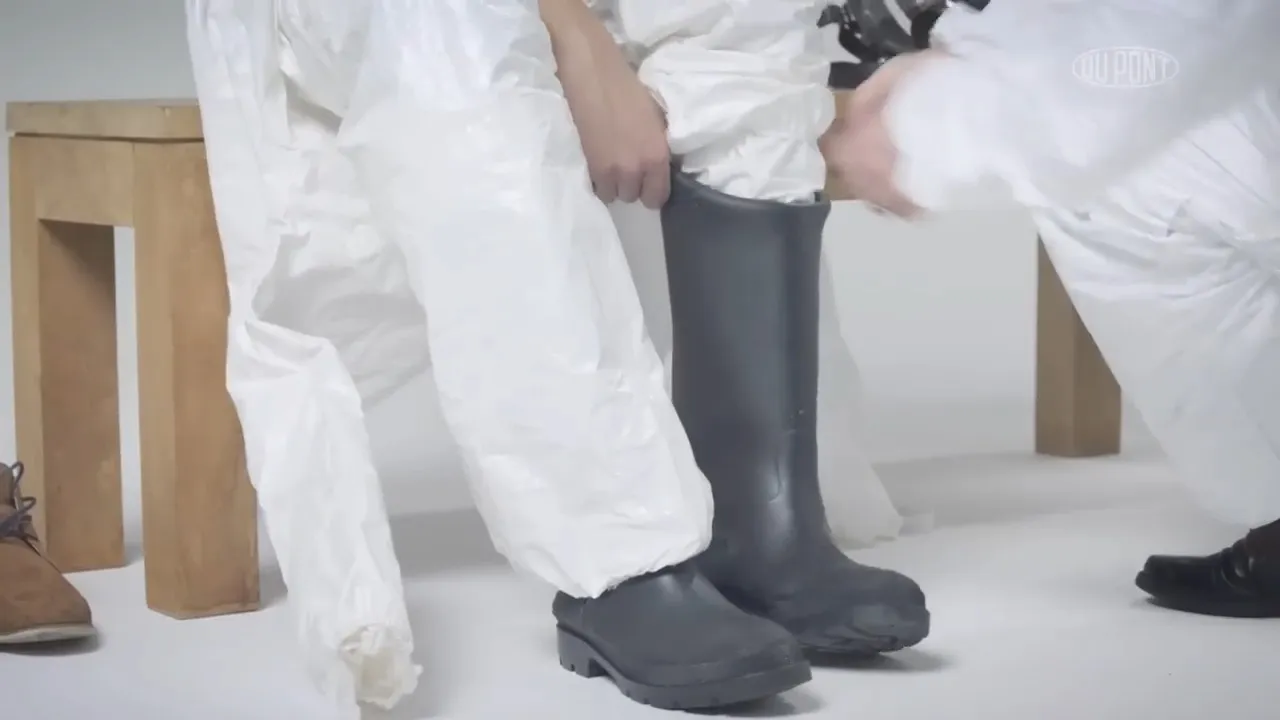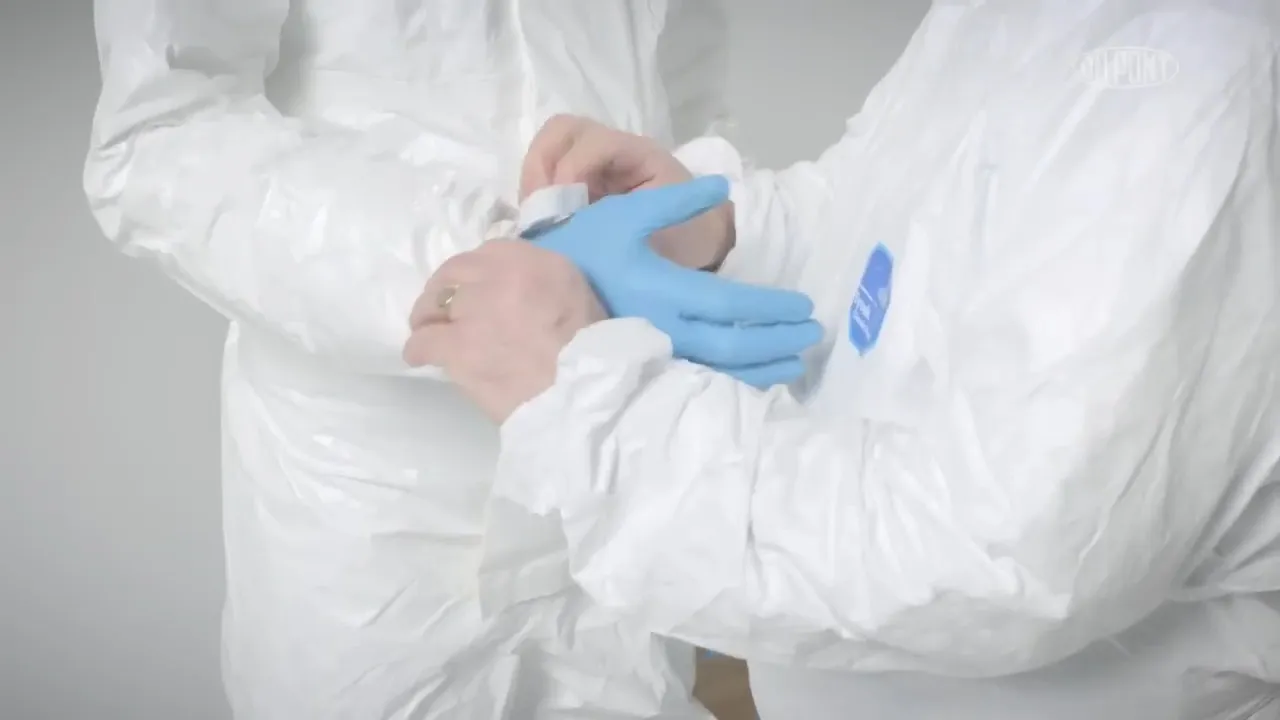Struggling to stay comfy and safe in your coveralls all day? Whether you’re working in construction, farming, or a cleanroom, what you wear underneath makes a big difference. This guide shares simple tips on picking the right fabrics, layering smart, choosing socks and shoes, adding accessories, and avoiding common mistakes. Let’s dive in to keep you protected and feeling good in your coveralls!
Why What You Wear Under Coveralls Matters?
Coveralls are a go-to for workers in tough jobs like construction, farming, manufacturing, oil and gas, or cleanrooms. They shield you from dirt, chemicals, or flames, but they can feel heavy, hot, or stiff if you don’t dress right underneath. The wrong underlayers can make you sweaty, itchy, or even unsafe. By picking the right clothes, socks, shoes, and accessories, you’ll stay comfy, move freely, and meet safety rules like OSHA or European standards (e.g., EN 343, EN 1149-5).
Key Factors for Choosing What to Wear Under Coveralls
Selecting the right undergarments to wear under work coveralls significantly impacts both comfort and safety. Consider factors like climate, activity level, material compatibility, and protection needs to make the best choice.
1. Weather and Climate for Coverall Comfort
Hot or Humid Conditions: Lightweight, breathable fabrics like polyester blends or cotton keep you cool by wicking sweat. Look for coveralls with features like the 3M™ Protective Coverall 4535, which has a large breathable back panel for better airflow.
Cold Conditions: Thermal undergarments or insulated layers trap body heat. Wool or synthetic fleece works best to stay warm without feeling bulky.
Wet Environments: Choose quick-drying fabrics like polyester to avoid feeling damp and cold.
2.Job Activity and Coverall Wear Time
High-Activity Jobs: If you’re moving a lot (e.g., construction, agriculture), pick stretchy, moisture-wicking underlayers to prevent overheating. Knitted cuffs or elastic waists add comfort during active tasks.
Long Shifts or Cleanrooms: For extended wear, like in cleanrooms, choose smooth, lint-free fabrics (e.g., polyester or nylon) to avoid skin irritation or particle shedding.
3. Compatibility with Coverall Materials
Material Match: Some safety coveralls, like Tyvek or SMS suits, need lint-free underlayers (e.g., polyester or nylon) to prevent contamination in cleanrooms. Tyvek is lightweight and lint-free, pairing well with synthetic undergarments.
Seam and Fabric Design: Check if your coveralls have taped or serged seams for extra protection against chemicals or dust. Match underlayers to maintain this barrier (e.g., non-shedding tri-laminate fabrics).
Safety Standards: Ensure that undergarments meet your job’s safety rules. For example, EN 1149-5 requires anti-static fabrics, while EN 14116 demands flame-retardant materials.
4. Balancing Comfort and Safety in Coveralls
Protection Trade-Offs:
Heavy coveralls (e.g., flame-resistant or chemical-proof) can feel less breathable. Pair them with soft, moisture-wicking underlayers to stay comfortable.
Innovations:
Look for coveralls with breathable panels, anti-static treatments, or ergonomic designs (like elastic cuffs) to boost comfort without losing safety.
Cleanroom Needs:
In sterile settings, continuous synthetic filament undergarments control particles while keeping you comfy.
Quick Tip: Always check your coveralls’ care label and workplace safety guidelines to pick underlayers that match your job’s demands.
Best Fabrics to Wear Under Coveralls
Choosing the right fabric to wear under coveralls is key to staying comfortable and protected on the job. The main options are cotton, polyester, blends, and specialized safety fabrics. Each has its benefits and drawbacks depending on your work environment.
Cotton for Breathability and Comfort
Cotton is ideal if you work in hot conditions or for long hours. It is breathable and soft, allowing good air circulation, which helps keep you cool. Cotton is also non-allergenic and absorbs sweat well. However, it holds moisture longer, which can feel uncomfortable if you get wet. Untreated cotton burns easily, so if fire risk is a factor, look for flame-retardant-treated cotton.
Polyester for Moisture-Wicking and Durability
Polyester dries quickly, which makes it great for wet or cold environments. It resists shrinking and wrinkling and lasts longer than cotton. On the downside, polyester is less breathable and might irritate sensitive skin. It’s best if you need a quick-drying and tougher fabric under your coverall.
Polyester/Cotton Blends: The Best of Both Worlds
Blends, such as a 65% polyester and 35% cotton mix, offer a good balance between comfort and durability. They resist shrinking and wrinkles better than cotton alone. These blends wick moisture better and last longer, while still offering some breathability.
Fire-Resistant and Safety Fabrics
For jobs involving heat, sparks, or hazardous materials, flame-resistant (FR) cotton and specialized materials like Tyvek and SMS fabrics are vital. Treated cotton reduces the risk of ignition, while Tyvek protects against tiny particles (down to 1 micron) and resists abrasion. SMS fabrics offer a balance of breathability and barrier protection. These options cost more but provide essential safety in high-risk settings.
Quick Fabric Choice Guide
- Hot and dry work:
Cotton or cotton blends for breathability and comfort - Wet or cold conditions:
Polyester or blends for fast drying and insulation - Fire or sparks risk:
Flame-resistant cotton or specialized safety fabrics like Tyvek and SMS - General durability:
Polyester/cotton blends with a 65/35 ratio are recommended
Using the right fabric under your PPE coveralls improves comfort, safety, and work performance every day.
Smart Layering Under Protective Coveralls
Choosing the right layers under coveralls is key to staying comfortable and protected on the job. Proper layering manages moisture, keeps you warm or cool, and allows for easy movement.
Best Base Layers for Coveralls
The most effective base layers are made from moisture-wicking synthetic fabrics or merino wool. These materials pull sweat away from your skin, keeping you dry and comfortable. Avoid cotton since it holds moisture and can make you cold.
- For hot or active work, use lightweight, breathable base layers.
- In cold or less active conditions, choose thicker, insulating base layers to keep warm.
Mid-Layers for Extra Warmth
Mid-layers trap body heat but still let moisture escape. Good options include:
- Polyester fleece(available in light, medium, or heavyweight)
- Synthetic insulated jackets
- Wool sweaters or blends
Fleece keeps you warm even if damp, while synthetic insulation performs better than down when wet. Down is very warm and lightweight, but loses warmth if it gets wet.
How to Avoid Bulky Layers and Stay Mobile?
Layers should be thin, flexible, and close-fitting but not tight. This promotes airflow and keeps insulation effective without limiting your movement.
- Choose snug layers that don’t bunch beneath coveralls.
- Make sure you can add or remove layers easily as your activity or temperature changes.
Layering Tips for Different Environments
Hot Conditions:
Wear a single, ultra-lightweight moisture-wicking base layer .
Avoid mid-layers unless extra protection is needed.
Opt for looser fits and lighter colors to reflect heat and improve airflow.
Cold Conditions:
Use a multi-layer system: base layer (moisture control), mid-layer (insulation), then coveralls.
Pick wool or technical fibers for better warmth and moisture management.
In very cold weather, combine a heavyweight base layer with a thick fleece or insulated jacket.
Adjust layers to balance warmth and avoid sweating during intense work.
Layering Examples for Worksite Comfort
| Environmental Condition | Recommended Workwear Combination |
|---|---|
| Hot environment | Light polyester or merino wool base layer + coveralls. |
| Moderate cold | Light merino base + medium-weight fleece + coveralls. |
| Extreme cold | Heavy merino wool base + thick fleece or synthetic insulated jacket + insulated coveralls. |
Choosing Footwear and Socks to Wear Under Coveralls
Selecting the right footwear and socks under protective coveralls is essential for comfort and safety during work. The choice depends on the work environment, hazards, and length of shifts.
Comfortable and Supportive Footwear
Shoes should fit well and have good cushioning to reduce foot fatigue.
Look for features like contoured insoles and arch support, especially if you stand or walk a lot.
Industrial shoes often have denser cushioning than regular shoes to support the foot’s bones and joints while absorbing shock.
Moisture-Wicking Socks to Prevent Blisters
Use socks made from moisture-wicking materials like polyester, nylon blends, or merino wool.
These socks keep feet dry, reducing friction and blisters.
Cushioned or double-layer socks provide extra protection in high-movement jobs.
Studies show workers switching from cotton to moisture-wicking socks report up to 50% fewer blisters.
Avoid cotton socks because they retain moisture and increase discomfort.
Industrial Safety Footwear Standards and Features
Safety shoes must follow OSHA and ASTM standards to protect against workplace hazards.
Important features include:
- Impact and compression protection (e.g., steel toe boots)
- Metatarsal guards for upper foot protection
- Electrical hazard and puncture resistance
- Waterproof and chemical-resistant materials, like rubber boots
Employers need to assess job hazards and provide suitable footwear based on these risks.
For example, ASTM F2413 ensures boots can handle heavy impacts, such as on construction sites.
Types of Safety Footwear to Consider
Steel-toe boots:
Protect against heavy falling objects.
Rubber boots:
Shield feet from chemicals and water.
Metatarsal guard boots:
Protect the upper foot from impacts.
Specialty boots include chainsaw protection, electrical insulation, and puncture-resistant soles.
Pairing Footwear and Socks with Coveralls
Choose combinations that address workplace hazards, comfort, moisture control and comply with safety regulations.
A proper job hazard assessment helps pick the best protective footwear and socks for each work situation.
Accessories to Wear Under Coveralls for Added Comfort and Protection
When wearing coveralls, adding the right accessories underneath can improve both comfort and safety. Here are some key considerations:
1. Gloves for Coverall Safety
Disposable gloves, like latex, vinyl, or nitrile, are important to wear under coveralls. They protect your skin from hazardous substances and reduce the chance of spreading contaminants. This is especially useful for healthcare workers and farm laborers dealing with chemicals or biohazards.
2. Knee Pads for Coverall Wearers
If your work involves kneeling or risks abrasion, wearing protective knee pads can prevent injuries and add comfort. Some coveralls come with built-in pads, but you can also wear separate ones underneath.
3. Base Layers and Under-Armor
To maintain comfort over long hours, layering with moisture-wicking or thermal under-armor is helpful. These base layers keep your skin dry, regulate temperature, and reduce irritation from abrasive coverall materials.
4. Headwear for Coverall Hygiene
Workers in cleanrooms or medical settings often wear disposable hair cap or hoods to keep the environment hygienic. In hot or intense tasks, breathable skull caps or sweatbands help absorb sweat and prevent discomfort. Ensure these do not interfere with other protective gear, like respirators or ear protection.
5. Maintaining Safety Compliance
Match your gloves, knee pads, and headwear to the hazards you face. For example:
– Use chemical-resistant gloves and hoods when handling hazardous chemicals.
– Wear earplugs or earmuffs in loud environments to protect hearing.
– Complement your headwear and gloves with eye and face protection in dusty or abrasive workplaces.
Regularly inspect your accessories for wear and replace as needed. Following safety guidelines from OSHA or related agencies ensures that all layers under your coveralls maintain proper protection.
6. Real-Life Examples
Healthcare workers
Use disposable gloves, hair caps, and shoe covers under coveralls to prevent infections.
Farm workers
Combine nitrile gloves, knee pads, and earplugs for protection and comfort during biosecurity tasks.
Cleanroom and food industry staff
Rely on hairnets, glove liners, and moisture-wicking base layers for hygiene.
Industrial maintenance personnel
Benefit from thick socks, knee and elbow pads, plus Under Armor to support prolonged wear.
Common Mistakes When Dressing Under Coveralls
Avoid these errors to stay safe and comfy in workwear coveralls:
Non-FR Fabrics: Don’t wear non-flame-resistant synthetics (e.g., regular polyester) under FR coveralls. They can melt in a fire, causing burns.
Overlayering: Too many layers reduce mobility by 30% and increase heat stress by 20%, per studies. Use 1–2 thin layers.
Ignoring Weather: Heavy fabrics in hot jobs cause dehydration. Thin layers in cold jobs leave you freezing.
Poor Fit: Tight coveralls cause discomfort; loose ones snag on machinery. Choose a snug, flexible fit.
Skipping Hygiene: Not changing sweaty base layers raises irritation and odors by 25%. Swap them during breaks.
Quick Tip: Wash coveralls with mild detergent to preserve flame resistance or waterproofing.
Tips for Maximum Comfort and Protection
Choosing the right base layer under coveralls is key to staying comfortable and protected. Natural fibers like cotton or wool work best because they reduce chafing and wick away sweat. Avoid synthetic fabrics, as they can cause overheating and bad odors during long shifts.
How to Layer for Comfort and Safety?
Wear thin, moisture-wicking base layers closest to your skin to stay dry.
Add or remove layers based on temperature, and select slightly larger coveralls to allow extra layers without restricting movement.
Make sure the coverall fits snugly but not too tightly to avoid pressure points or rubbing.
Adjust zippers, straps, and cuffs to keep your coverall secure and prevent contaminants from entering.
Tuck sleeves and pant cuffs into boots to keep debris and tripping hazards away.
Hygiene and Odor Control Tips
Change your base layers daily, especially on multi-day shifts, to cut down sweat odor and skin irritation.
Wash coveralls as per manufacturer instructions, avoiding harsh detergents to keep flame resistance intact.
Inspect and change damp or sweaty base layers during breaks to stay comfortable.
Opt for antimicrobial or odor-resistant base layers to stay fresh through long workdays.
Industry Insights and Advice
Oil and gas workers often prefer cotton or wool for breathability and safety from flash fires.
Carry spare base clothes to swap out if your shift runs longer than 8–10 hours.
Following daily hygiene routines can reduce skin irritation and odors by up to 25%.
Quick Practical Tips
Avoid loose clothing under coveralls to prevent snagging on machinery.
In hot environments, choose breathable coveralls with mesh vents and thin moisture-wicking undergarments.
When working with chemicals, select certified protective materials like Tyvek for both coveralls and base layers.
FAQs About Wearing Clothes Under Coveralls
Q: Can I wear cotton under FR coveralls?
A: Only if it’s FR-treated cotton. Regular cotton can ignite, so check your workplace safety rules.
Q: What’s best for sensitive skin under coveralls?
A: Merino wool or soft cotton blends are gentle under workwear coveralls. Avoid rough synthetics.
Q: How do I stay cool in coveralls during summer?
A: Use a thin polyester base layer, light-colored undergarments, and coveralls with breathable panels.
Q: Are budget underlayers available for coveralls?
A: Yes! Try polyester/cotton blends from Dickies or Hanes (~$10–20) under workwear coveralls
Q: How often should I change base layers under coveralls?
A: Daily, or during breaks for long shifts, to avoid irritation in protective coveralls.
Q: What’s the best way to clean coveralls?
A: Follow the care label—use mild detergent, no bleach—to maintain protection in workwear coveralls.
Conclusion
Wearing the right clothes under coveralls keeps you comfortable and safe, no matter your job. Choose breathable or warm fabrics based on the weather, layer smartly for mobility, and add accessories like gloves or knee pads for extra protection. Avoid mistakes like overlayering or non-FR fabrics to stay safe. Want more tips? Share your favorite coverall hacks in the comments or check out our guide to cleaning coveralls at morntrips.com!




